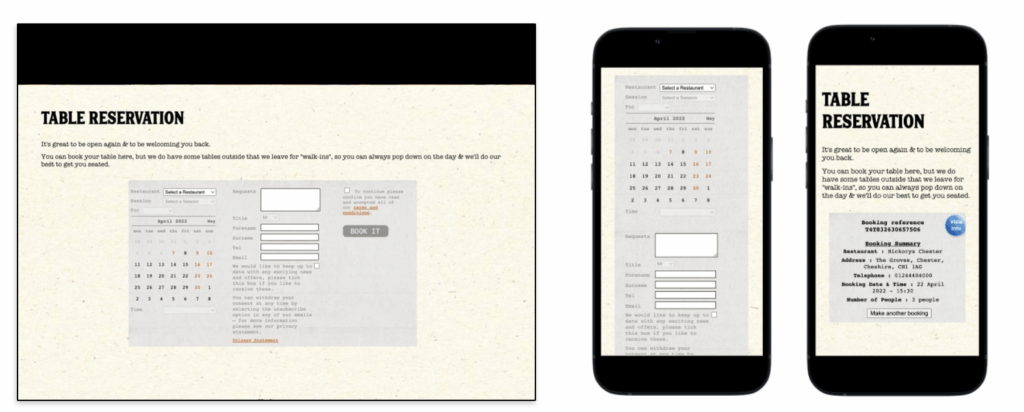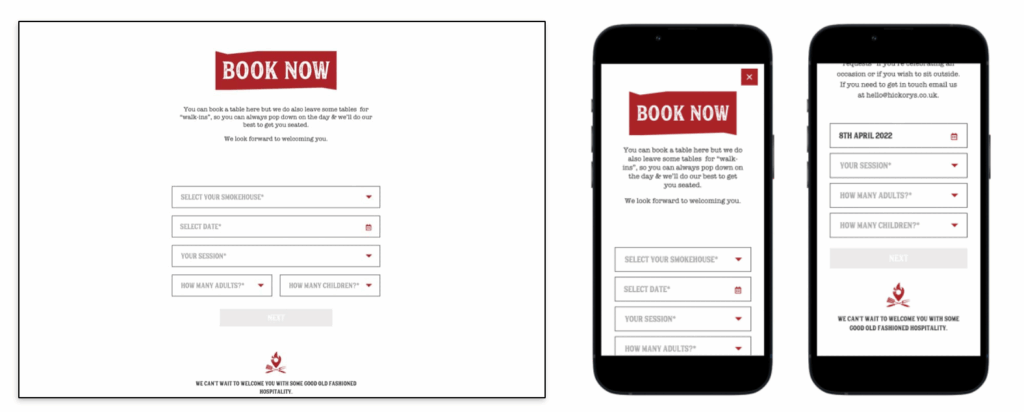I’m pretty sure we’ve all been there at one point of our careers. You’ve gone to the client with the perfect project, something that will make a big impact and isn’t too expensive. You present it with confidence, and then they drop the classic “we just don’t have the budget for that”.
It’s frustrating but I don’t think they’re trying to be difficult, they just need you to help connect the dots between what you’re proposing and what actually matters to them.
A real example that worked for me
I worked on a project a few years ago for a national restaurant group owned by Greene King (who we won’t name here). Their booking form and journey was, let’s just say…. cumbersome. It wasn’t their fault, when it was first built there were technical limitations from the provider. It lived in an iframe, looked dated, and they couldn’t properly track what was happening with it. It worked, technically speaking, but that was about it.

Our suggestion was pretty straightforward, using the new API that the provider issued, we could build them a proper booking form that actually looked like it was part of their website. Modern design, works properly on phones, and most importantly they could see what was actually happening with their bookings.

The tricky bit wasn’t building it. It was getting everyone to agree it was worth doing in the first place.
The numbers
Here’s what happened after we launched the new form. Comparing the year after to the year before, and taking into account an average of 8% of bookings not showing, the results were pretty striking:
- 2.57 million people visited their booking pages
- Conversion rate improved from 8.62% to 12.2%
- Adjusted for no-shows, that 3.58% lift was worth ~£5 million in extra revenue
- The project cost just £7,670
Not a bad return on investment for what most people would consider a few minor tweaks.
The questions that really matter
The main thing I think that allowed us to successfully pitch this project was having the data that mattered to the decision maker.
What’s your average booking worth? For this restaurant group, it was about £60. Once you know that number, you can quickly work out what more bookings actually mean in real terms.
How many people convert right now? This gives you something to work from. Even bumping conversion up by 1% on a million visitors means thousands more bookings.
What’s 1% actually worth to you? In this case, 1% was worth around £1.5 million. Even half a percent is still £750,000. Use their actual numbers, not some industry benchmark that means nothing to them.
Do customers come back? If your improvement helps someone book once, and they typically return five times a year, suddenly that 1% improvement is worth five times more. We never included this data but we did give it them as a KPI to watch and include in future board presentations.
What’s customer data worth to you? A decent booking form captures emails, preferences, what people are looking for. That’s incredibly valuable for marketing, loyalty programs, and targeting the right offers.
Visualise the analytics
If your project touches any kind of process where people drop out (like booking something), get hold of tools like Hotjar or dive into your analytics. Show them exactly where people give up.
For this restaurant group, only 37% of people who checked availability actually made it through to entering their details. That’s a massive leak in the funnel and nothing makes the case quite like showing someone a visual of all the money walking out the door.
Getting past “We don’t see the value”
So when someone says they don’t see the value, they’re not being awkward, they’re asking you to explain why this matters to them specifically.
Skip the features and benefits and talk about the outcome. Work out the numbers, ask the right questions. Show them what 1% increase actually means in real money.
And if that fails, work out what doing nothing is actually costing them. That conversation tends to focus minds pretty quickly.
In the following year the CEO and Head of Marketing didn’t need any more persuasion on projects. We had gained their trust and it was a lot easier getting smaller projects approved.
